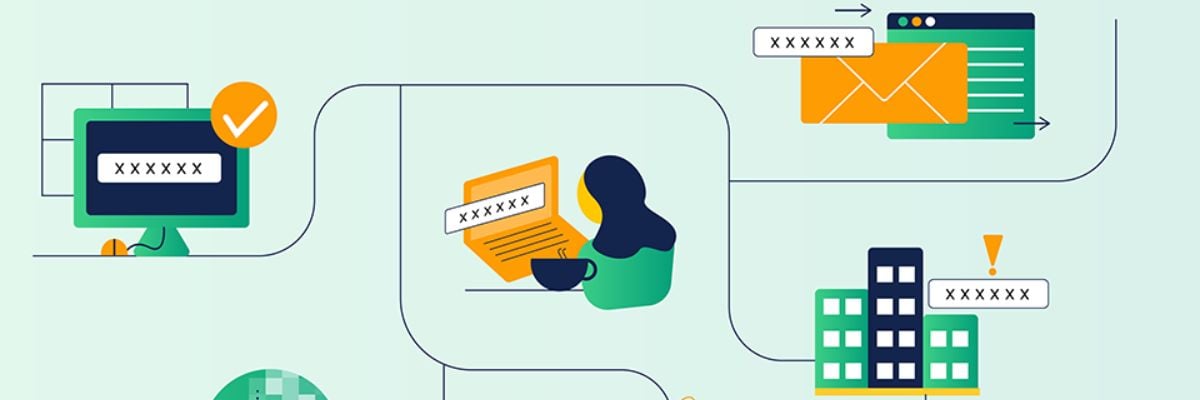By: Darrian Breedlove, Content Writer on April 14th, 2023
Should You be Using Zero Trust or Airgap Networks?
There are many types of securities to invest in for your business. Multi-factor authentication, endpoint detections, and VPNs are among them. According to Garter, spending on information security and risk management will reach $188.336 billion in 2023.
Zero Trust and Airgap Networks are newer cybersecurity concepts that protect sensitive information and systems from unauthorized access. However, they differ in their approach and level of security.
What is Zero Trust?
Zero Trust is a security model that assumes that every user, device, and network is compromised and shouldn't be trusted. Users are instead granted access to resources based on factors like identity verification and device health.
This means every user and device trying to access a resource must go through layers of security before gaining access.
Security policies are implemented at every infrastructure level in a Zero Trust environment. This includes the network, applications, and data. Industry leaders and larger enterprises have long since adopted this framework. However, it became much more widespread with the emergence of remote work.
Pros of Zero Trust
-
Provides thorough security by only granting access to authorized users, devices, and applications.
-
Reduces the risk of insider threats by limiting access to sensitive data and resources.
-
Offers real-time threat detection and response capabilities.
-
Facilitates a more agile business operation by allowing access from anywhere, at any time.
Cons of Zero Trust
-
Requires a high level of detail and management, requiring a significant investment in tools, processes, and training.
-
May affect user productivity, as it requires extra authentication and verification steps.
-
Can be difficult to integrate with legacy systems or third-party applications that do not support Zero Trust principles.
-
May require a significant change in the company's culture and mindset toward security.
What is an Airgap Network?
This type of network works to physically separate a secure network and an unsecured network, such as the internet. It is often used in high-security environments where sensitive data and systems need protection.
This separation allows the sensitive assets to be out on an island so to speak, away from threats. Common users are typically "high risk" and "classified" types of institutions. These would include:
- Government organizations
- The military
- Power plants
- Industrial manufacturing
- Financial services.
These institutions use it to ensure that even if an attacker gains access to a vulnerable network, they cannot access the secure network or data.
Pros of an Airgap Network
-
Offers a high level of physical security by isolating assets from less secure networks.
-
Provides a simple and effective way to protect against cyber threats that rely on network connectivity.
-
Does not require significant investment in security tools and processes.
-
Offers a higher level of compliance with regulatory requirements in specific industries.
Cons of an Airgap Network
-
Requires dedicated hardware and personnel to manage the air gap which can get pricey.
-
May limit data sharing and communication, impacting productivity and collaboration.
-
It may not protect against all types of threats such as malicious USB drives or other removable media, where insider threat actors have physical access to critical infrastructure.
What's Best for You?
Zero Trust and air gapped systems are two very different approaches to cybersecurity. Zero Trust is a model that uses layers of security to allow access to only authorized users and devices. In contrast, Airgap Networks isolate sensitive data from unsecure networks. This provides protection from potential threats by eliminating the connectivity factor.
Choosing between them depends on the specific security needs of your business. Select an outsourced IT company that can help you identify your cybersecurity needs. This will depend on your priorities, goals, and characteristics.
To learn more about what to ask when selecting a managed service company, read about it here: 10 Questions to Ask Before Committing to a Managed Services Provider (usherwood.com).
Read On

What Are Insider Threats and How Do You Combat Them?
When it comes to cyberattacks, insider threats are commonly overlooked. Hazards are not only caused...

Zero Trust Is a Must to Combat Shadow IT, Zero-Day Attacks And More
You might have heard the terms Zero Trust and Shadow IT recently but left wondering: "What is it?"...

Common Cyber Threats to Look Out For
Cybersecurity has been a significant obstacle for businesses since computers were first introduced...




